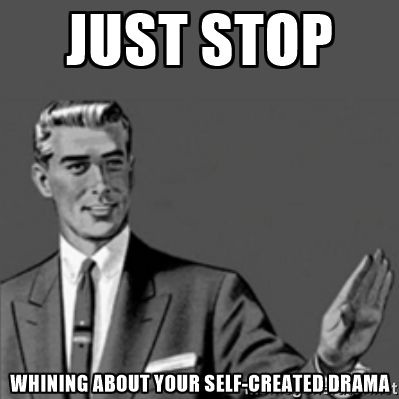Trump’s Treasury Sec ‘Looking for an Exit Door’
[STAGE LEFT]
Just Look At That Orange Pancake Face! What Is Wrong With His Brain?
Treasury Secretary Scott Bessent is reportedly looking for a way out of the Trump administration following the Republican president’s disastrous tariff rollout damaged his “credibility,” alleged MSNBC host Stephanie Ruhle on Friday.
“Some [sources] have said to me, he’s looking for an exit door to try to get himself to the Fed, because in the last few days he’s really hurting his own credibility and history in the markets,” said Ruhle on MSNBC’s Morning Joe.
Bessent has inadvertently become the face of Trump’s “Liberation Day” tariff announcement on Wednesday—which slapped a universal 10 percent tariff on all U.S. imports as well as “reciprocal” tariffs on 180 countries. The announcement sent stock futures plummeting, with the Dow Jones Industrial Average logging its worst day since 2020, reported Investor’s Business Daily.
Ruhle suggested that Bessent, who built his $521 million fortune managing massive hedge funds, can’t stomach Trump’s “absurd tariff math,” which some critics have slammed as a “kindergarten-level understanding” of international trade.
According to Ruhle’s sources, Trump is “not listening” to his treasury secretary, “the odd man out” in the president’s inner circle.
She added, “[Bessent] actually understands how the markets work and, what’s happening right now, is only going to hurt markets.”
Trump has wielded tariffs as form of economic revenge, claiming Wednesday that the U.S. has been “looted, pillaged, raped, plundered” by other nations for decades.
Bessent’s tone has been far more reserved. He called the use of sweeping tariffs “maximalist” positions in October 2024 when he was an economic adviser in Trump’s campaign.
“It’s escalate to de-escalate,” Bessent told the Financial Times at the time.
In the run up to the tariff rollout, Bessent echoed this posture, warning countries not to retaliate.
“Sit back, take it in, let’s see how it goes. Because if you retaliate, there will be escalation. If you don’t retaliate, this is the high-water mark,” he said Wednesday.
But on Friday, China announced a retaliatory 34 percent tariff on all U.S. imports, sending stocks nose diving again.
Ruhle, a former Wall Street executive, said actual support for the tariffs is thin even among Trump’s business backers: “I cannot find one single investor with one single argument that makes sense for these tariffs. All I’m getting is, well, this is what the president thinks. This is what he’s always wanted to do,” she said.
Liberation Day tariffs based on made-up numbers.
Even some dissenting Republicans decried the move, while economists were puzzled by the methodology behind it.
CNBC’s Squawk Box panel was also left perplexed by Trump’s methodology, labeling the move “absurd.” Steve Liesman, the business news channel’s senior economic reporter, summarized some of the alarmed reactions from economic authorities Thursday.
“The biggest concern was that the president was said to have completely made up the tariff numbers other countries charged the U.S.,” Liesman said.
“He said the U.S. was charging those countries half of what they charge us. But his assertion bore little resemblance to the real tariffs other countries charge, most trade experts said,” Liesman went on.
He added: “Instead, the White House used a formula few had seen before based on the trade deficit that caused most to scratch their heads.”
Going off-script, he said: “So, this tariff policy looks like it’s basically resting on made-up numbers.”
This caused chatter on the panel, and host Becky Quick said she had spoken to traders who had a withering assessment of Trump’s formula. “I will say the traders who are passing this on to me ... are also saying it’s absurd and shows a kindergarten-level understanding of international trade.”
The Office of the United States Trade Representative claimed the new import levies had been calculated as the “rate necessary to balance bilateral trade deficits between the U.S. and each of our trading partners.”
However, many experts couldn’t see any sense in the tariffs or the methodology underpinning them.
Thomas Sampson, associate professor of economics at the London School of Economics, told the Financial Times the formula was “a figleaf for Trump’s misguided obsession with bilateral trade imbalances.” He added that there is “no economic rationale” behind the tariffs.
Paul Krugman, Professor of Economics at the City University of New York, was a bit more forthright in his assessment. He said Trump had gone “full-on crazy.”
Scott Lincicome, vice president of general economics at the Cato Institute, similarly called Trump’s approach “insane.”
“This is just embarrassing,” opined Erica York, vice president of federal tax policy with the Tax Foundation think tank.
Wedbush Securities Analyst Dan Ives shared his thoughts on X. He also called the tariffs “illogical and absurd” and said the chart Trump used at the White House’s Rose Lawn to illustrate the levies will be shown “in classrooms” in the future.
“First off, the tariff numbers showed are factually incorrect what other countries charged the U.S.,” he wrote, adding: “If a 9th grader in high school presented this tariff chart to a teacher in a basic economics class, the teacher would laugh.”



